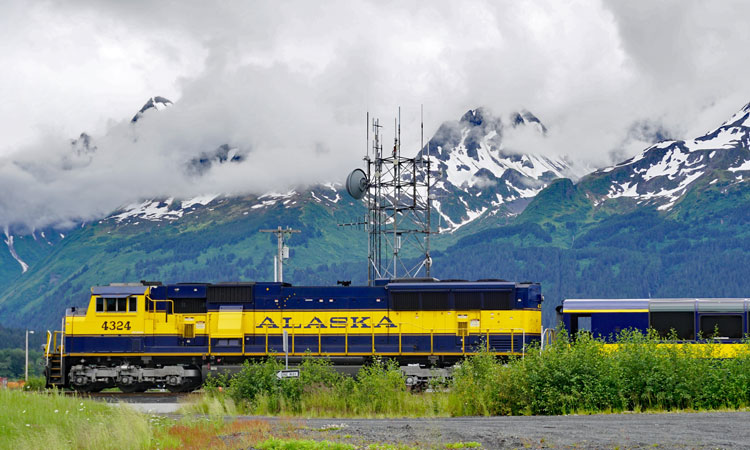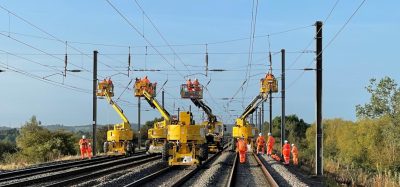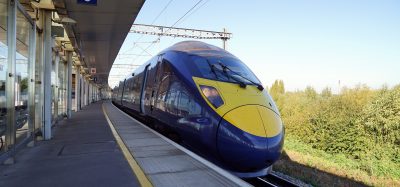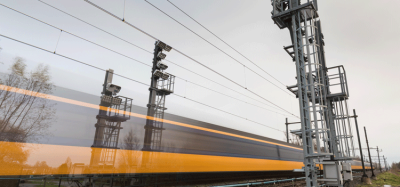FRA announces funding for rail improvements in Alaska and South Dakota
Posted: 29 September 2020 | Global Railway Review | No comments yet
The U.S. Department of Transportation’s Federal Railroad Administration (FRA) has announced a huge funding package for rail infrastructure upgrades and enhanced rail safety measures for projects in Alaska and South Dakota.


The U.S. Department of Transportation’s Federal Railroad Administration (FRA) has selected five projects in two states to receive more than $6.9 million in Special Transportation Circumstances (STC) Grants made available by the Consolidated Appropriations Acts of 2019 and 2020. This includes more than $1.2 million directed grant funding for two projects in Alaska, and $5,670,000 in directed grant funding for three projects in South Dakota.
The following projects were selected in Alaska:
Alaska Railroad Anderson Wheel Impact Load Detector – up to $761,918
The proposed rural rail project will procure, install, and put into service one wheel impact load detector on the northern portion of the Alaska Railroad Corporation (ARRC) rail system near Anderson, Alaska. The wheel impact load detector system continuously monitors rail vehicle wheel health by measuring vertical wheel forces via rail-mounted strain gauges, and then alerts maintenance personnel to high-impact forces caused by damaged wheels. These forces can further damage vehicles, cargo, and rail infrastructure. ARRC currently has this wheel performance management system in its southern region at milepost 121.3. This installment will allow ARRC to similarly monitor and collect data on trains that travel in the northern portion of the rail line.
Alaska Railroad Wasila Control Point – up to $480,082
The proposed rural rail project will upgrade an existing intermediate control signal to a complete control point at ARRC milepost 158.9 in Wasilla, Alaska, to halve a 13-mile gap in control points. Having a control point at this location will allow ARRC dispatch more operational options to keep passenger and freight trains moving while allowing maintenance-of-way work to continue with fewer disruptions since potential stoppages will impact a shorter section of track.
The following projects were selected in South Dakota:
South Dakota – Dakota, Missouri Valley & Western Rail Improvement – up to $1,870,000
The proposed rural freight rail capital project consists of several track improvements between mile post 115.5 and 74.6 located approximately between Britton and Aberdeen, South Dakota, including replacing approximately 20,450 ties, removing and replacing old anchors, adding ballast, and making repairs to two railroad bridges. These improvements will make the state-owned track safer and more efficient for lessee Dakota, Missouri Valley & Western Railroad.
South Dakota – Midland Rail Improvement Project – up to $2,240,000
This proposed rural freight rail capital project will replace approximately four miles of main line Rapid City Pierre & Eastern rail between milepost 530 and milepost 534, between Fort Pierre and Rapid City passing through Midland, South Dakota. Current rail is lightweight, obsolete and approaching 100 years old. Replacing the rail will improve track geometry and reduce internal defects and breakage thereby reducing derailment risk.
South Dakota – Mitchell-Rapid City Meet and Pass Siding- up to $1,560,000
This proposed rural Brule County freight rail capital project will construct a new, approximately 10,000ft rail siding east of Highway 45 near the Gavilon grain elevator on the Dakota Southern Railway mainline east of Kimball, South Dakota. The siding increases capacity and decreases delays. The siding will be located on property half of which is currently owned by the State. The other half of the project right-of-way will be acquired with funding outside of this grant. The grantee will clarify how this acquisition will be accomplished prior to grant obligation.
“This [$1.2 million federal investment and more than $5.6 million federal investment] will upgrade rail infrastructure and enhance rail safety in communities across Alaska and South Dakota,” said U.S. Transportation Secretary, Elaine L. Chao.
FRA Administrator Ronald L. Batory, said: “We’re pleased to support the Alaska Department of Transportation and Public Facilities’ [and the South Dakota Department of Transportation’s] work to improve the States’ rail system and look forward to seeing these changes. A healthy rail system is vital to a strong U.S. economy, and grants allow FRA to contribute to sustaining and improving this important transportation network.”
The Fixing America’s Surface Transportation (FAST) Act authorised the STC Grants, which provide directed grant funding appropriated for the Consolidated Rail Infrastructure and Safety Improvements (CRISI) Program and the Restoration and Enhancement (R&E) Grant Program for rail capital projects. The projects are specific to certain States that lack intercity passenger rail service or are not connected to the national rail system.
STC Grants provide directed funding appropriated for rail capital projects to certain States that lack intercity passenger rail service or are not connected to the national rail system.
On 8 May 2020, the FRA announced in the Federal Register the STC Grants Notice of Funding Opportunity (NOFO). This NOFO made available directed funding for eligible rail capital projects, as follows: $1,242,600 for Alaska from the 2020 Appropriation and $5,671,974 for South Dakota from the 2019 and 2020 Appropriations.
The project eligibility requirements for the STC Grants are state-specific. For Alaska, an STC project must be a freight or passenger rail-related capital project. For South Dakota, eligible STC projects must be freight rail capital projects that are on a State rail plan developed under Chapter 227 and that provide public benefits as defined in 49 U.S.C. 22701(2).
Federal funding awarded for STC Grants must not exceed 80 per cent of the total project cost. The required 20 per cent non-Federal share may comprise public sector – State or local – or private sector funding, or both.
Related topics
Funding & Finance, Infrastructure Developments, Safety, Track/Infrastructure Maintenance & Engineering
Related organisations
Federal Railroad Administration (FRA), U.S. Department of Transportation (USDOT)








